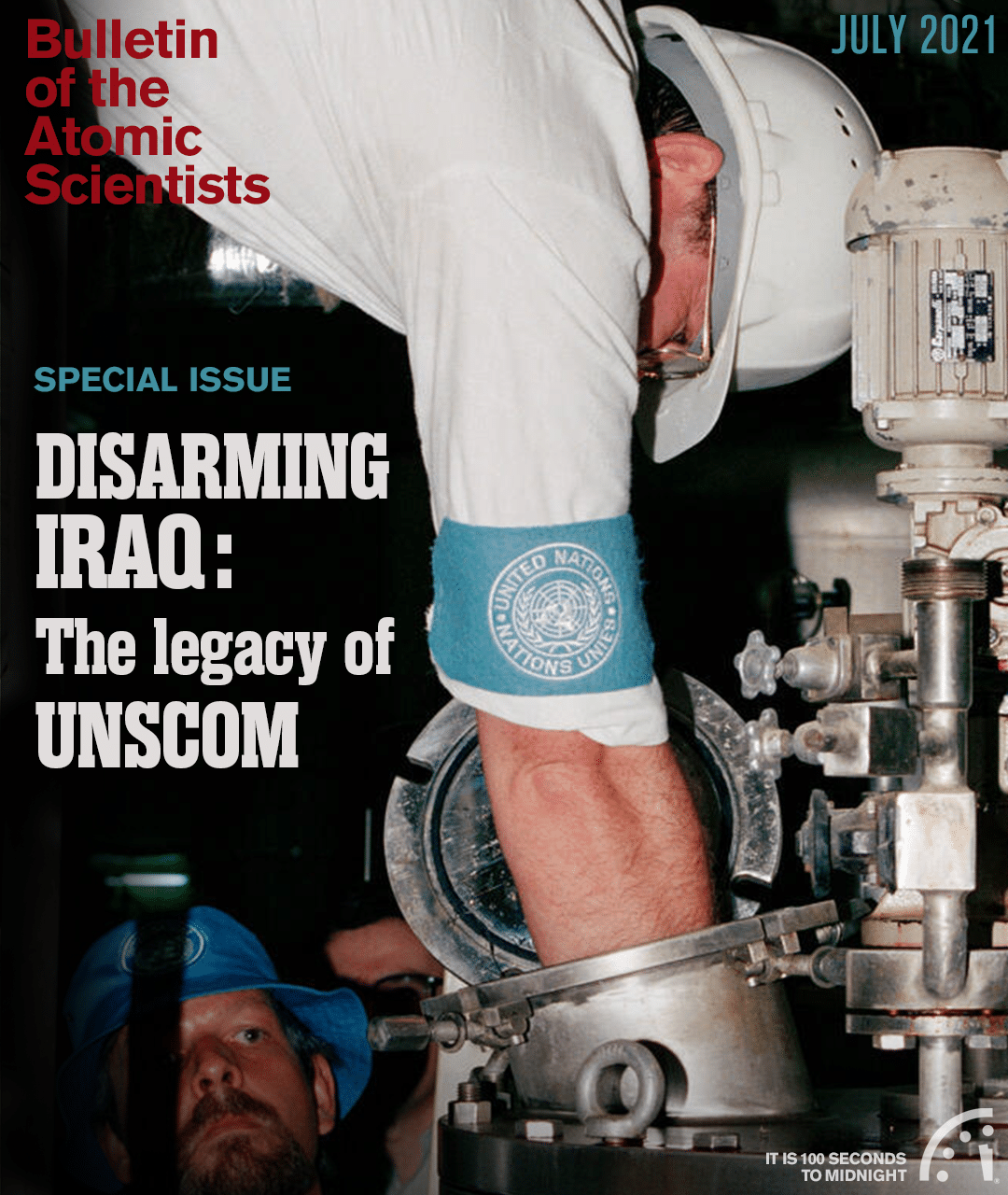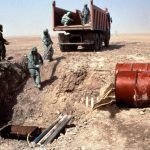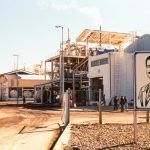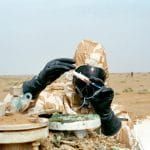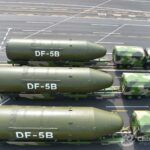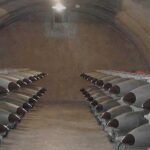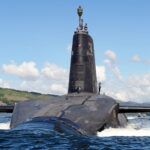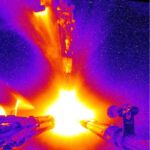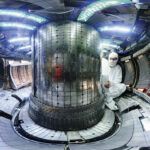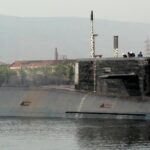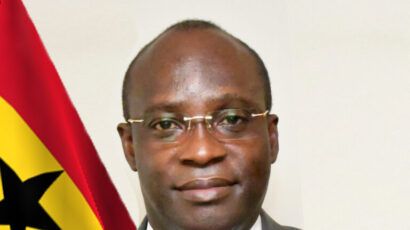Nuclear Notebook: How many nuclear weapons does North Korea have in 2021?
By Hans M. Kristensen, Matt Korda | July 21, 2021
Nuclear Notebook: How many nuclear weapons does North Korea have in 2021?
By Hans M. Kristensen, Matt Korda | July 21, 2021
Editor’s note: The Nuclear Notebook is researched and written by Hans M. Kristensen, director of the Nuclear Information Project with the Federation of American Scientists, and Matt Korda, a research associate with the project. The Nuclear Notebook column has been published in the Bulletin of the Atomic Scientists since 1987. This issue’s column examines North Korea’s nuclear arsenal. The authors cautiously estimate that North Korea may have produced enough fissile material to build between 40 and 50 nuclear weapons; however, it may not have actually assembled that many.
To download a free PDF of this article, click here.
To see all previous Nuclear Notebook columns, click here.
North Korea has made significant advances over the past two decades in developing a nuclear weapons arsenal. It has detonated six nuclear devices––one with a yield of well over 100 kilotons––and test-flown a variety of new ballistic missiles, several of which may be capable of delivering a nuclear warhead to targets in Northeast Asia and potentially in the United States and Europe. However, there is considerable uncertainty about which of North Korea’s missiles have been fielded with an active operational nuclear capability.
It is widely assumed that North Korea has operational nuclear warheads for medium-range missiles. However, it is unclear whether it has managed to develop fully functioning nuclear warheads that can be delivered by long-range ballistic missiles and, following violent atmospheric reentry, detonate as planned. That said, just because North Korea has not yet publicly demonstrated a capability to deliver a functioning nuclear reentry vehicle on a long-range ballistic missile does not necessarily indicate that it is not working on developing one or could not field one in the future. It is clear from its development efforts and public statements that North Korea ultimately intends to field an operational nuclear arsenal capable of holding regional and US targets at risk.
Due to the lack of clarity surrounding North Korea’s nuclear program, agencies and officials of the US intelligence community, as well as military commanders and nongovernmental experts, struggle to assess the program’s characteristics and capabilities. Based on publicly available information about North Korea’s fissile material production and missile posture, we cautiously estimate that North Korea might have produced sufficient fissile material to build 40 to 50 nuclear weapons and that it might possibly have assembled 10 to 20 warheads for delivery by medium-range ballistic missiles.
North Korea’s nuclear policy
North Korea declared a no-first-use policy following its fourth nuclear test in 2016; however, it diluted its statement with the caveat that it would not “be the first to use nuclear weapons […] as long as the hostile forces for aggression do not encroach upon its sovereignty” (Korean Central News Agency 2016). Subsequent statements have also included such caveats; during the 75th anniversary of the ruling Korean Workers’ Party in October 2020, Kim Jong Un stated that North Korea’s nuclear deterrent “will never be used preemptively. But if, and if [sic], any forces infringe upon the security of our state and attempt to have recourse to military force against us, I will enlist all our most powerful offensive strength in advance to punish them” (38 North 2020).
At various times, North Korean media has also threatened to launch nuclear weapons in response to more minor provocations, such as joint US-South Korean military exercises (Ellyatt 2016). However, despite these occasional inflammatory statements, it is highly likely that North Korea—as with other nuclear-armed states––would only use its nuclear weapons in extreme circumstances, particularly if the continued existence of the North Korean state and its political leadership were in jeopardy.
Fissile material and warhead numbers
North Korea produces plutonium at its five megawatt-electric (MWe) nuclear reactor, located at the Yongbyon Nuclear Scientific Research Center in North Pyongan province. In September 2020, the International Atomic Energy Agency (IAEA) reported that despite ongoing maintenance and sustainment activities, “it is almost certain that the reactor has remained shut down since early December 2018” (International Atomic Energy Agency 2020, 4). Despite the reactor’s dormancy, satellite imagery suggests that the complex’s Thermal Plant––which supplies steam to the Radiochemical Laboratory used for plutonium reprocessing––has been operating since February 2021 after a multi-year hiatus (Makowsky, Pabian, and Liu 2021). However, this does not necessarily imply that North Korea is now using the complex for plutonium reprocessing; independent analysts suggest that North Korea could plausibly be using the complex to process radioactive waste or conduct operational maintenance (Pabian, Heinonen, Liu, and Makowsky 2021).
Since 2010, North Korea has also been in the process of constructing an experimental light water reactor and in recent years has begun transferring major reactor components into the facility at Yongbyon. In 2019 and 2020, the IAEA reported that North Korea may have conducted infrastructure tests of the experimental light water reactor’s cooling system. Although this reactor appears to be designed for civilian electricity production, it would also have a latent capacity to produce weapons-grade plutonium or tritium that could be used for North Korea’s nuclear weapons program.
In April 2021, Siegfried Hecker––the former Los Alamos National Laboratory director who was given unprecedented access to North Korean nuclear facilities over several years––estimated that North Korea had a plutonium inventory in the range of 25 to 48 kilograms and was capable of producing up to six kilograms per year at full operation (38 North 2021).
It is much more difficult to assess the state of North Korea’s uranium enrichment operations because the footprint for these facilities is significantly smaller and harder to detect. North Korea has only declared a single uranium enrichment facility––the Yongbyon Nuclear Fuel Rod Fabrication Plant, which is estimated to have approximately 4,000 centrifuges––and this facility was in regular operation throughout 2020 (38 North 2021; International Atomic Energy Agency 2020, 4). However, it is widely believed that North Korea has at least one additional centrifuge facility outside of the known Yongbyon complex.
In May 2018, for example, a Washington Post article first reported the existence of a potential covert uranium enrichment site at Kangson––just outside of Pyongyang––citing work by the Institute for Science and International Security (Warrick and Mekhennet 2018). In July 2018, a team of researchers from The Diplomat and the James Martin Center for Nonproliferation Studies identified a complex at Kangson as the centrifuge facility’s suspected location (Panda 2018). A subsequent Washington Post article indicated that “there is a broad consensus among US intelligence agencies that Kangson is one of at least two secret enrichment plants” (Nakashima and Warrick 2018). In September 2020, the IAEA suggested that “If the Kangson complex is a centrifuge enrichment facility this would be consistent with the agency’s assessed chronology of the development of [North Korea’s] reported uranium enrichment programme” (International Atomic Energy Agency 2020, 5). However, recent independent analysis has raised doubts about the nature of the Kangson complex, suggesting that the site might instead be used to manufacture components for centrifuges (38 North 2021; Heinonen 2020). Without better public information or access to the site itself, it is not possible to confirm the nature of the Kangson site, or its potential role in North Korea’s nuclear weapons program. Given these uncertainties, it is unclear how much fissile material North Korea has produced and how many weapons it could potentially build.
The number of weapons depends not only on the amount of fissile material produced but also on the weapon design. It is unclear whether North Korea is prioritizing development and production of higher-yield thermonuclear weapons or lower-yield fission-only or boosted single-stage weapons. More powerful warheads with the high yield demonstrated in the single 2017 advanced design test would consume more fissile material if based on a composite warhead design or require special hydrogen fuel if based on a two-stage thermonuclear warhead design. Lower-yield single-stage fission weapon designs would require less fissile material. Such assumptions can result in very different estimates for the number of nuclear weapons. One assessment in 2020 concluded North Korea only had 10-20 nuclear weapons if it committed its fissile material to thermonuclear weapons production (Fedchenko and Kelley 2020). Another assessment concluded North Korea had around 40 weapons and only “very few thermonuclear bombs” (Hecker 2020; 38 North 2021).
Based on publicly available information, we assess that North Korea has produced sufficient fissile material to build 40 to 50 nuclear weapons (if all material is used) but has possibly assembled fewer than that. If so, most of those warheads would likely be single-stage fission weapons with possible yields of 10 to 20 kilotons demonstrated in the 2013 and 2016 tests and with at the most only a few thermonuclear warheads.
Assumptions about fissile material production and warhead designs also affect projections for how many nuclear weapons North Korea might have in the future and tend to result in inflated numbers. One study in 2021, for example, assumed North Korea might already have 67-116 nuclear weapons and projected the inventory might reach 151-242 nuclear weapons by 2027 (Bennett 2021). Others found the projection to be “much too high” (38 North 2021). It seems more plausible that North Korea might be capable of adding sufficient fissile material for a few to half a dozen nuclear warheads per year, which would potentially be sufficient to produce a total of approximately 80-90 weapons by the end of the decade.
Nuclear testing and warhead capabilities
After six nuclear tests––including two with moderate yields and one with a high yield––there is no longer any doubt that North Korea can build powerful nuclear explosive devices designed for different yields. North Korea has even published pictures of what it claims to be different warhead designs (including a “thermonuclear” design) that appear small and light enough to potentially be delivered by ballistic missiles (Figure 1). The published designs might be real warheads, prototypes, or models. There is no way to know for sure. Nor is it known if the published designs match the devices detonated in the nuclear explosive tests.
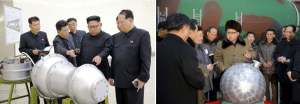
Although North Korea is widely assumed to have developed warheads for its short-range ballistic missiles, there is less agreement about its ability to deliver functioning nuclear warheads with long-range missiles. These uncertainties are often overlooked in the public debate about North Korea’s nuclear capabilities. To better understand the status of North Korea’s nuclear weapons program and assessments about its warheads, it is useful to review major milestones and assessments from the last two decades or so.
North Korea apparently began to develop nuclear weapons even before the formal collapse of the Agreed Framework––a 1994 arrangement whereby the United States would provide Pyongyang two proliferation-resistant nuclear power reactors, and North Korea would freeze operations at reactors thought to be part of a nuclear weapons program. As publicly reported in 2004, Pakistan’s Abdul Qadeer Khan said that, some time around 1999, he was shown “three plutonium devices” during a visit to an underground facility about one hour outside Pyongyang (Sanger 2004). Three years later, then-US Secretary of State Colin Powell publicly stated: “We now believe they have a couple of nuclear weapons and have had them for years” (State Department 2002).
The “weapons” Powell referred to might have been the “devices” Khan saw or early prototype designs intended to be used in nuclear tests if necessary. But only three years after Powell’s statement, in December 2005, North Korea itself for the first time declared that it had “manufactured nukes for self-defense” and that the weapons “will remain [a] nuclear deterrent for self-defense under any circumstances” (Washington Post 2005).
Less than a year later, on October 9, 2006, North Korea conducted its first nuclear test. The explosive yield was limited, less than one kiloton––not an impressive demonstration of a nuclear weapons capability and widely seen as a fizzle. The US intelligence community stated that the test produced a yield of “less than one kiloton––well below the yield of other states’ first nuclear test” (Office of the Director of National Intelligence 2007).
The second test––two and a half years later, on May 25, 2009––was a little more powerful and “suggests the North has the capability to produce nuclear weapons with a yield of roughly a couple kilotons TNT equivalent,” according to the US intelligence community.
These tests did not demonstrate the yield needed for operational nuclear weapons. A Rand Corporation report in 2012 cautioned: “It should also be considered that even speculative sources estimate that North Korea cannot have more than a few nuclear weapons available. If they exist, these devices are very precious to the regime, and it seems unlikely that they would be mounted on inaccurate and unreliable missile systems––the risk of ‘loosing’ a weapon is simply too high” (Schiller 2012).
The third test, conducted on February 12, 2013, was more convincing. The intelligence community initially said that its yield was “several kilotons”––but international analysis subsequently estimated the yield to have been around 10 kilotons (Office of the Director of National Intelligence 2013; NORSAR 2017). This prompted some experts to suggest that North Korea might have developed a miniaturized warhead for the Nodong, though others thought it was too soon for North Korea to have accomplished that feat (Albright 2013; Kim J., 2014; McGrath and Wertz 2015).
Around the same time, the Defense Intelligence Agency––in an assessment distributed to members of Congress––for the first time concluded: “[The Defense Intelligence Agency] assesses with moderate confidence the North currently has nuclear weapons capable of delivery by ballistic missiles; however the reliability will be low” (Shanker, Sanger, and Schmitt 2013). The assessment did not reflect the conclusion of the US intelligence community as a whole and triggered an immediate rebuttal by the Defense Department: “It would be inaccurate to suggest that the North Korean regime has fully developed and tested the kinds of nuclear weapons referenced in the passage.” The Director of National Intelligence added that “the statement read by the member is not an intelligence community assessment” and that “North Korea has not yet demonstrated the full range of capabilities necessary for a nuclear-armed missile” (Clapper 2013).
Similarly, Air Force Global Strike Command stated in a briefing in September 2013 that North Korea “currently does not have an operational warhead; if developed, it could be deployed on” the Musudan (Hwasong-10), Taepo Dong-2, or Hwasong-13 (Air Force Global Strike Command 2013).3 Global Strike Command did not list any medium- or short-range missile with nuclear capability.
Even so, the assessment among private analysts at the time was that medium- and possibly short-range ballistic missiles were the first platforms for North Korean nuclear weapons. An April 2015 report from the US-Korea Institute at the Johns Hopkins School of Advanced International Studies, for example, claimed that the Nodong missile formed “the backbone of its current deterrent… ” (Schilling and Kan 2015). Similarly, after North Korea’s fifth nuclear test, in September 2016, demonstrated a yield of 10 to 15 kilotons, the Institute for Science and International Security estimated that “North Korea may have a handful of plutonium-based warheads for its Nodong ballistic missile” (Albright 2017).
But military commanders also appeared to go further than the intelligence community at the time. The commander of US Forces Korea, General Curtis Scaparrotti, stated in October 2014: “I believe they have the capability to miniaturize a device at this point and they have the technology to potentially deliver what they say they have.” Scaparrotti cautioned that “We’ve not seen it tested,” but nonetheless added, “I don’t think as a commander we can afford the luxury of believing perhaps they haven’t gotten there.” The Pentagon press secretary clarified: “General Scaparrotti said he believes they have the capability to miniaturize. That’s not the same thing as saying that they have the capability to mount, test, and deliver a nuclear weapon in an [intercontinental ballistic missile] (ICBM)” (Alexander and Stewart 2014).
The South Korean Ministry of Defense did not agree with Scaparrotti’s assessment. “Despite its significant technology level, we don’t think the North is capable of making such nuclear weapons,” a spokesperson said in February 2015 (Korea Herald 2015a).
Clearly, there was confusion about how to describe the capability. On March 20, 2015, The Korea Herald quoted Admiral Cecil Haney, then the commander of US Strategic Command, about North Korea’s nuclear capability: “We think they already miniaturized some of this capability” (Korea Herald 2015b). But when asked at a press conference only four days later if North Korea had a miniaturized warhead that it could put on a missile, Haney said: “As of yet, I don’t see any tests yet that [were] associated with this miniaturized claim” (Defense Department 2015a).
And when Admiral Bill Gortney––commander of North American Aerospace Defense Command and US Northern Command––was asked in April 2015 if he thought North Korea had “developed the capability to miniaturize a nuclear warhead and put it on a ballistic missile like the KN-08,” he responded that “we assess that they have the ability to do that” (Defense Department 2015b).
At the time, however, North Korea had not even test-launched the KN08, so Gortney cautioned: “Now, we have not seen them do that. We haven’t seen them test that.” Yet he added that “I don’t think the American people want us to––you know, there are some things that they want us to make sure we edge on the side of conservatism to make sure we get right” (Defense Department 2015b).
The explanation was an important reminder to be cautious when interpreting official statements about North Korean nuclear capabilities. “Our assessment,” Gortney said, “is that they have the ability to put it on—a nuclear weapon on a KN-08 and shoot it at the homeland. And that—that’s the way we—that’s the way we think. That’s our assessment of the process (emphasis added). We haven’t seen them test the KN-08 yet and we’re waiting to do that. But it doesn’t necessarily mean that they will fly before they test it” (Defense Department 2015b).
After its fourth nuclear test, on January 6, 2016, North Korea claimed it had successfully detonated a “hydrogen” bomb. The yield of the explosion was relatively modest (around five kilotons), and the US intelligence community assessed the following month that “the low yield of the test is not consistent with a successful test of a thermonuclear device” (Clapper 2016). A second test that year, on September 9, was more powerful (10 to 15 kilotons) but still far from what one would expect from a successful thermonuclear test.4 It is possible, but unknown, that the North Korean reference to “hydrogen” implied use of tritium to boost the efficiency of a single-stage fission device. Such a technology would enable North Korea to use less fissile material in each bomb and further expand its production capacity (Jones 2016).
And it is unclear if the tests involved actual nuclear warhead designs or test devices that would require further modification to be fitted on a missile. Dennis Blair, who was director of national intelligence in 2009–2010 and is a former commander of US Pacific Command, as late as April 2017 seemed to think that the explosions involved test devices. During a talk, Blair characterized North Korea’s nuclear warheads as “these crude weapons that they developed maybe seven or eight years ago,” each of which “is about the size of half of this stage… .” Pyongyang’s program, Blair asserted, “may be developing 10 to 15 nukes” (Blair 2017). Whether Blair was aware of later designs is not clear, but his description is a far cry from the pictures released by North Korea, whether legitimate or not, that showed the so-called “disco ball” and “peanut” warhead designs.
In early August 2017, General Paul Selva––vice chairman of the Joint Chiefs of Staff––gave a detailed account of the uncertainties that remain about North Korea’s nuclear capabilities (Garamone 2017). “Before we can assert Kim Jong-un has a nuclear missile capable of targeting the United States,” Selva said, “there are a couple of aspects we must know.” He listed several criteria that must be met (Selva 2017):
- “One, [Kim] has to have the missile that will actually range that distance. We believe he has that capability right now. It’s clear that he can build a rocket that can fly that far.
- [Two,] [h]e’ll have to have the guidance and control system, the guidance and stability control, to move a rocket across that distance without it breaking up. We don’t know if he has that. We don’t know that he doesn’t. He’s been pretty successful at short- and medium-range ballistic missiles. But the physics of a long-range missile are substantially different. So stability control matters. And that’s a gap we need to fill in our understanding of whether or not he can do this.
- The third piece is a reentry vehicle that can survive the stresses of an intercontinental ballistic missile shot. Once again, much easier to go straight up and down than it is to endure the reentry stresses and the actual heat of an intercontinental missile shot. We don’t know if he’s got that technology. We don’t know that he doesn’t, but we don’t know that he does. He hasn’t demonstrated it. We have to see.
- And the last is a nuclear weapon that can survive that trip. Again, that’s what we don’t know. We don’t know the design specifics of his nuclear weapons—purported nuclear weapons. We don’t know if he’s been able to miniaturize it and make it stable enough.”
One month later, on September 3¸ 2017, North Korea demonstrated clearly that it could potentially produce nuclear devices with yields in the range of thermonuclear warheads. A nuclear explosion with a yield of well over one hundred kiloton showed that North Korea had managed to design a thermonuclear device or one that used a mixed-fuel (composite) design. The US intelligence community reportedly called it an “advanced nuclear device” (Panda 2017b). Yield estimates range from 140 to 250 kilotons (Asia Review 2017; NORSAR 2017).
Despite the uncertainty about the number and ability to deliver a functioning nuclear warhead to the United States, some experts asserted that North Korea could do just that. Yet even after several ICBM flight tests conducted by North Korea in 2017, US Chairman of the Joint Chiefs of Staff Gen. Joseph Dunford in 2019 indicated North Korea had not yet demonstrated a capability to deliver a functioning nuclear warhead on a long-range missile. “I still see a potential although as-yet-undemonstrated capability to match a nuclear weapon with an intercontinental ballistic missile…” (Dunford 2019). A UN panel of experts reported in 2021 that an anonymous member state had assessed, “judging by the size of the missiles of the Democratic People’s Republic of Korea, that it is highly likely that a nuclear device can be mounted on the intercontinental ballistic missiles, and it is also likely that a nuclear device can be mounted on the medium-range ballistic missiles and short-range ballistic missiles.” But the size of a missile does not in and of itself show anything about the capability of the nuclear device it may be capable of carrying, so the member state cautioned that “it was uncertain whether the Democratic People’s Republic of Korea had developed ballistic missiles resistant to the heat generated during reentry” (United Nations 2021).
In sum, these assessments indicate that although North Korea has developed nuclear devices small enough to be mounted on its medium- and long-range ballistic missiles, it is unclear if it has developed a reentry vehicle capable of protecting a device during reentry through the Earth’s atmosphere.
Land-based ballistic missiles
Over the past decade, North Korea has developed a highly diverse ballistic missile force, including missiles in all major range categories. In addition to the aforementioned uncertainties surrounding North Korea’s nuclear warheads, it is unclear how many operational delivery vehicles North Korea possesses and which of those would be assigned a nuclear mission. It is also important to note that some of the ballistic missile types North Korea has flight-tested or displayed might be research projects intended to develop future ballistic missile technology, rather than demonstrations of operational missiles.
In recent years, a wealth of new information about North Korean missile bases has become publicly available, most prominently thanks to the recent work of Joseph Bermudez and Victor Cha on the Beyond Parallel web site (Beyond Parallel). Despite North Korea’s missile development and extensive construction at suspected missile bases, however, the operational status of many of these missiles remains uncertain. The Missile Defense Review report published by the Pentagon in 2018, for example, stated that none of North Korea’s modern longer-range missiles had been fielded (Defense Department 2019).
In order to ensure completeness, this section analyzes all of North Korea’s known land-based ballistic missiles (see Table 1) and offers some hypotheses about which missiles are most likely to have a nuclear role.
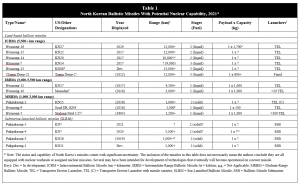
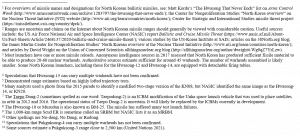
Short-range ballistic missiles
North Korea possesses several distinct types of short-range ballistic missiles (SRBMs), although many are part of the same missile “family” and therefore share common designs and characteristics. We have not yet seen authoritative information that North Korean SRBMs are nuclear capable, but this is a category of the missile force that is undergoing significant development, so they are included here for background. Moreover, in a speech in May 2021, Kim Jong Un stated that North Korea had developed what he described as “tactical nuclear weapons including new-type tactical rockets…” For the future, he stated it was necessary to improve the technology “and make nuclear weapons smaller and lighter for more tactical uses. This will make it possible to develop tactical nuclear weapons to be used as various means according to the purposes of operational duty and targets of strike in modern warfare…” (North Korean Ministry of Foreign Affairs 2021). The meaning of “tactical” is not clear. It could mean actual short-range tactical nuclear weapons or simply weapons that have shorter range than intercontinental weapons.
North Korea operates a number of Toksa (KN02) solid-fueled ballistic missiles with a maximum range of 120 kilometers, and potentially an extended-range version with a maximum range of 170 km (Kim E., 2014). This missile is based on the Russian Tochka (SS-21 Scarab), which was developed as a dual-capable missile. However, there is no credible public evidence suggesting that North Korea has developed a nuclear capability for the Toksa.
North Korea operates several distinct types of liquid-fueled missiles belonging to the Scud missile family. The Hwasong-5 and Hwasong-6 SRBMs are the North Korean versions of Russian-built Scud B and Scud C missiles. The US Air Force’s National Air and Space Intelligence Center lists the missiles’ ranges at 300 and 500 kilometers, respectively, and estimates that North Korea has fewer than 100 launchers for the combined Hwasong-5 and -6 arsenal (National Air and Space Intelligence Center 2020, 21).
North Korea is modernizing both types of missiles by equipping them with maneuverable reentry vehicles designed to evade regional missile defense systems like the Terminal High Altitude Area Defense (THAAD) system, which the United States deploys in South Korea (Panda 2017e). The modernized Hwasong-5, which has been designated KN21 by the US government, was flight-tested three times in August 2017, with one failure (James Martin Center for Nonproliferation Studies 2021). The modernized Hwasong-6, which has been designated KN18, was successfully flight-tested in November 2017 (James Martin Center for Nonproliferation Studies 2021). Given their shorter ranges, it is unlikely that any of North Korea’s Scud derivatives have a nuclear role.
In recent years, North Korea has been developing a new series of more accurate, solid-fueled SRBMs with indigenous designs. These missiles, which are known as the KN23, KN24, and KN25, have collectively been tested 32 times since the beginning of 2019 (James Martin Center for Nonproliferation Studies 2021). We have not yet seen authoritative information that these systems have a nuclear role; however, the sophisticated testing program for these newer systems indicates that North Korean missile troops are becoming significantly more practiced at conducting salvo launches and lowering the time intervals between missile launches––which could also have implications for North Korea’s nuclear systems (Dempsey 2020).
Medium-range ballistic missiles
North Korea has developed three medium-range ballistic missiles (MRBMs), all three of which are likely to be operational. This is the category of missile that is most likely to have an operational nuclear capability.
The Hwasong-9 (Scud ER) is a single-stage, liquid-fuel, road-mobile, medium-range ballistic missile launched from a four-axle transporter erector launcher. This launcher is very similar to the one used with Scud B and Scud C short-range ballistic missiles. Many sources designate the Scud-ER a short-range ballistic missile, but in a triple test launch on September 5, 2016, the missiles apparently flew to a range of 1,000 kilometers, the lower end of the range that the National Air and Space Intelligence Center uses for medium-range ballistic missiles (National Air and Space Intelligence Center 2020, 25).
The Hwasong-7 (Nodong) is a single-stage, liquid-fuel, medium-range ballistic missile carried on a five-axle road-mobile transporter erector launcher. The missile, which was first test-flown in 1993, exists in two versions (Mod 1 and Mod 2) and has an estimated range of 1,200 kilometers or more. The National Air and Space Intelligence Center estimates that North Korea deploys fewer than 100 Hwasong-7 launchers (National Air and Space Intelligence Center 2020, 25). Apparently, the Nodong was originally intended to carry a first-generation nuclear warhead, and US naval intelligence reportedly warned in 1994 that North Korea would probably be able to equip the missile with a nuclear warhead by 2000, and possibly earlier (Bermudez 1999; Pinkston 2008). The Nodong’s accuracy is poor relative to North Korea’s more modern missiles, and its conventional utility is therefore quite limited. Partially for this reason, some analysts have suggested that the Hwasong-7 is one of the most likely missiles to have an operational nuclear capability (Albright 2013; James Martin Center for Nonproliferation Studies 2006; Center for Strategic and International Studies 2018).
The Pukguksong-2 (KN15)––sometimes spelled “Pukkuksong-2” or “Bukkeukseong-2” (“Polaris-2”)––is a two-stage, solid-fuel, medium-range ballistic missile carried in a canister on a road-mobile caterpillar-type transporter erector launcher. The missile was first test-launched in 2017 and appears to be a modification of the submarine-launched Pukguksong-1 (Polaris-1). It is North Korea’s first attempt to field a solid-fuel, land-based ballistic missile. The first two flight tests in 2017 demonstrated a range of up to 1,200 kilometers, which fits the National Air and Space Intelligence Center’s range estimate of 1,000 kilometers or more (Wright 2017a; Wright 2017c). Compared to liquid-fuel missiles, solid-fuel missiles require less logistical support and require much less preparation time before launch.
Intermediate-range ballistic missiles
The Hwasong-10 (Musudan) is a single-stage, liquid-fuel, intermediate-range ballistic missile launched from a six-axle transporter erector launcher. The missile, which is also sometimes designated BM-25, has an estimated range of more than 3,000 kilometers, but it suffered several test failures in 2016 (James Martin Center for Nonproliferation Studies 2021). The National Air and Space Intelligence Center estimates that North Korea has fewer than 50 Hwasong-10 launchers (National Air and Space Intelligence Center 2020, 25). However, given the system’s unreliability, the overall status of the Hwasong-10 program remains unclear; it may have been replaced by the newer Hwasong-12 as North Korea’s primary intermediate-range ballistic missile.
The Hwasong-12 (KN17) is a single-stage, liquid-fuel, intermediate-range ballistic missile carried on an eight-axle road-mobile transporter erector with a detachable firing table. After several failures, the missile was test-launched on a highly lofted trajectory on May 14, 2017, reportedly demonstrating that it could travel approximately 4,500 kilometers if flown on a normal trajectory (Wright 2017b). The National Air and Space Intelligence Center estimates the range as 3,000 kilometers or more. A subsequent test, on August 28, overflew Japan before it crashed in the western Pacific, some 2,700 kilometers from the launch site. A third successful launch on September 14 demonstrated a longer range—approximately 3,700 kilometers (Panda 2017c; Wright 2017f). At this stage, it is unknown if the Hwasong-12 has been deployed.
Intercontinental ballistic missiles
The most dramatic development has been North Korea’s display and test-launching of large ballistic missiles that appear to have intercontinental range. North Korea has publicly shown five types of missiles in this category: the Taepo Dong-2, the Hwasong-13, the Hwasong-14, the Hwasong-15, and the Hwasong-16. These systems are in various stages of development, and some may simply be mockups or technology demonstrators.
The Taepo Dong-2 is a three-stage, liquid-fuel, long-range missile that is thought to be a derivative of the Unha-3 space-launch vehicle. The Unha-3 placed a satellite in an unstable orbit in 2016. North Korea has not yet demonstrated a functioning reentry vehicle for the Taepo Dong-2, and the National Air and Space Intelligence Center’s 2020 annual report lists the system as a “space launch vehicle” (National Air and Space Intelligence Center 2020, 29). Given North Korea’s recent development of newer, more sophisticated long-range systems, we assess that the Taepo Dong-2 is not currently an operational military system and will not be a focus for North Korea’s ICBM program moving forward.
The Hwasong-13 (KN08) is a three-stage, liquid-fuel ICBM carried on an eight-axle transporter erector launcher that uses a truck similar to the one used for the Hwasong-14 ICBM. The Hwasong-13 was first displayed during a parade in 2012. In 2013, an Air Force Global Strike Command briefing listed the KN08 as an ICBM that “could field in [the] next [five] years” (Air Force Global Strike Command 2013). However, the Hwasong-13 has not been flight tested, and given North Korea’s recent development of newer, more sophisticated long-range systems, we assess that the Hwasong-13 is not currently an operational system and will not be a focus for North Korea’s ICBM program moving forward.
In July 2017, North Korea conducted its first and second ever test-launches of an ICBM using Hwasong-14 (KN20) ICBMs. The two-stage, liquid-fueled Hwasong-14 appears to share its first stage with the Hwasong-12 intermediate-range ballistic missile and is launched from an eight-axle road-mobile transporter erector with a detachable firing table.
The first test launch took place on July 4th. It flew on a highly lofted trajectory to 950 kilometers, and an unnamed US government source later told The Diplomat that the United States assessed the range to be 7,500 to 9,500 kilometers (Panda 2017a). North Korea released a video of the launch that showed the missile had a modified payload shroud, which looked similar to a shroud that appeared in photos of Kim Jong Un, engineers, and a peanut-shaped device said to be a thermonuclear warhead. North Korea claimed that the test demonstrated that it could use a reentry vehicle to protect the missile’s warhead, but that was later shown to be inaccurate (Wright 2017d).
The second Hwasong-14 test launch, conducted on July 28th, also used a lofted trajectory and reached an apogee of roughly 3,700 kilometers. According to the National Air and Space Intelligence Center and some independent analysts, the test demonstrated that the missile could, if flown on a normal trajectory, have a range of over 10,000 kilometers (Wright 2017e; National Air and Space Intelligence Center 2020, 27). This would potentially bring US cities on the west coast, including Los Angeles and Seattle, within striking range (Elleman 2018). The weight of the payload used in the test, which could significantly affect the range, is not known; however, subsequent analysis suggests that the test was likely not conducted using a reentry vehicle with a realistically heavy mock warhead (Acton, Lewis, and Wright 2018). Therefore, the test did not demonstrate whether or not North Korea has a functioning ICBM reentry vehicle to protect a warhead. It is notable that North Korea did not display the Hwasong-14 at its most recent military parade that featured ICBMs, in October 2020; this could indicate that North Korea intends to put more emphasis on its newer, longer-range ICBMs (NK News 2020).
During a parade in October 2017, North Korea also displayed two new launchers with large canisters for transport of missiles. One launcher appeared similar to the eight-axle transporter erector used for the Hwasong-14, but modified with a large canister that resembled the missile canister used on the Russian SS-25 (Topol) transporter erector-launcher. The second new launcher equipped with a missile canister strongly resembled the transporter erector launcher used for the Chinese DF-31A. Canister launchers are normally used to transport solid-fuel missiles, so the two new launchers might indicate that North Korea is trying to develop a solid-fuel ICBM.
After a two-month pause in missile flight tests, on November 29th, 2017 North Korea launched a newer ICBM with an even longer range: the Hwasong-15 (KN22). The two-stage, liquid-fuel missile was launched from a nine-axle transporter erector on a highly lofted trajectory to nearly 4,500 kilometers, which indicates a maximum range on a normal trajectory with a light payload of approximately 13,000 kilometers, sufficient to potentially target most of the United States (Wright 2017g). The National Air and Space Intelligence Center lists the range of the Hwasong-15 to be upwards of 12,000 kilometers (National Air and Space Intelligence Center 2020, 29). However, it is important to note that heavier payloads––including nuclear warheads––would decrease the missile’s range. Hwasong-15 ICBMs were displayed during North Korea’s October 2020 military parade (NK News 2020).
In April 2018, Kim Jong Un announced that North Korea would observe a self-imposed moratorium on nuclear explosive tests and flight tests of long-range ballistic missiles (Korean Central News Agency 2018). North Korea has adhered to this declared moratorium; despite the January 2020 announcement by North Korean diplomats that the country would no longer observe the moratorium, North Korea has not yet broken either commitment (Nebehay 2020).
At its October 2020 military parade, North Korea unveiled a new type of liquid-fueled ICBM (Figure 2), which is likely to be designated the Hwasong-16 (KN27), per North Korean naming conventions. The Hwasong-16 is significantly larger than North Korea’s other ICBMs, and independent analysts estimate that the missile’s diameter could range between 2.4 and 2.5 meters, with a length of roughly 24 to 25 meters (Lewis 2020; La Boon 2020; Elleman 2020). If eventually deployed, it is estimated that the Hwasong-16 could potentially deliver a large warhead––or hypothetically a small number of multiple reentry vehicles or a single reentry vehicle with penetration aids––to the continental United States. However, these advanced capabilities would require a sophisticated testing campaign that would take several years to complete (Elleman 2020).
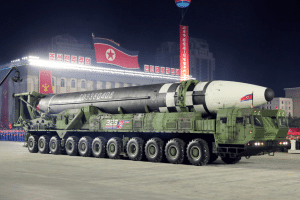
Overall, despite North Korea’s considerable advancements in its ICBM program, the country has still not publicly demonstrated an operationally functioning reentry vehicle that can protect a warhead during reentry through the Earth’s atmosphere, and there remains considerable uncertainty about how the combination of the missile, reentry vehicle, and warhead would function in a real attack.
After the Hwasong-14 ICBM test in July, the US Central Intelligence Agency (CIA) reportedly concluded that the reentry vehicle did not survive reentry but would nonetheless likely work in an attack on the United States (Panda 2017d). Yet after the test flight of the Hwasong-15 ICBM on November 28, a US official told CNN that “the North Koreans had problems with reentry” and that the missile likely broke up upon reentry into Earth’s atmosphere (Starr and Sanchez 2017).
The South Korean deputy minister of defense policy, Yeo Suk-joo, reportedly told the South Korean parliament that North Korea still needed to prove some technologies, like reentry, terminal stage guidance, and warhead activation (Kim and Solovyov 2017). And Seoul’s Foreign Minister Kang Kyung-wha added the North Koreans “haven’t demonstrated their reentry capability. They haven’t demonstrated their remote targeting, or the miniaturization that is required to do this” (Krever 2017). These statements match the assessments listed above from US officials.
Union of Concerned Scientists expert David Wright agreed that “North Korea has not yet demonstrated a working reentry vehicle on a trajectory that its missiles would fly if used against the United States,” but added that there did not appear to be a technical barrier to building a working reentry vehicle (Wright 2017h). In 2017, Stanford’s Siegfried Hecker estimated that this might take another two years of tests (Hecker 2017).
Submarine-launched ballistic missiles
North Korea is developing several types of submarine-launched ballistic missiles (SLBMs), all of which are part of the Pukguksong family of missiles (other spellings used are Pukkuksong or Bukkeukseong), or “Polaris.” The National Air and Space Intelligence Center’s 2020 ballistic and cruise missile report states that none of North Korea’s SLBM have been deployed (National Air and Space Intelligence Center 2020, 33). The first versions may have been technology development projects intended to develop technologies for future operational missiles.
The Pukguksong-1 (KN11) is a two-stage, solid-fuel missile designed to be carried on a single Sinpo-class submarine. The submarine only has one missile tube. The Pukguksong-1 has been test-launched six times in total in 2015 and 2016, with three successes (James Martin Center for Nonproliferation Studies 2021). The National Air and Space Intelligence Center lists the Pukguksong-1’s range above 1,000 kilometers (National Air and Space Intelligence Center 2020, 33).
In October 2019, North Korea test-launched a new type of SLBM: the Pukguksong-3, which could have a maximum range of up to 1,900 kilometers (Wright 2019). The Pukguksong-3’s existence had previously been revealed by Kim Jong Un’s visit to a chemical materials institute in August 2017 (Panda 2017f).
During the October 2020 military parade, North Korea unveiled a newer type of solid-fuel SLBM: the Pukguksong-4, which may have a longer range than its predecessor. The two-stage missile is wider than the Pukguksong-1 and possibly a little shorter than the Pukguksong-3. Its larger diameter indicates that it could hypothetically carry multiple warheads or penetration aids to overcome ballistic missile defenses. Speculations that the Pukguksong-4 might currently be capable of carrying multiple reentry vehicles seem premature. The missile has not yet been flight tested.
At the military parade in January 2021, North Korea displayed yet another SLBM version: Pukguksong-5. The missile, which has not been flight tested, is longer than the Pukguksong-4 but about the same length as the Pukguksong-3. The Pukguksong-5’s shroud, however, is less stub and more elongated than the shrouds on the two previous missiles (Sutton 2021; Elleman 2021). Pukguksong-5 might have greater range and payload capacity (United Nations 2021, 96). As with other North Korean missiles, speculations about multiple reentry vehicle capability seem premature at this time.
Other potential platforms
No credible public information demonstrates that North Korea has developed nuclear warheads for delivery systems other than ballistic missiles, even though warheads for ballistic missiles are more difficult to develop than gravity bombs because of the extreme environment of their launch and trajectory. All other nuclear-armed states first developed nuclear bombs for aircraft and then proceeded to field warheads for missiles.
If North Korea had wanted to develop a deliverable nuclear weapon quickly, it could potentially have developed a crude gravity bomb for delivery by an H-5 (Il-28) medium-range bomber. This potential option is mentioned only for background; no public evidence suggests that North Korea has pursued it. A nuclear-capable coastal defense cruise missile, designated KN09, was listed in the 2013 briefing by the Air Force Global Strike Command, but was deleted in a subsequent revision (Kristensen 2013).
Together, we make the world safer.
The Bulletin elevates expert voices above the noise. But as an independent nonprofit organization, our operations depend on the support of readers like you. Help us continue to deliver quality journalism that holds leaders accountable. Your support of our work at any level is important. In return, we promise our coverage will be understandable, influential, vigilant, solution-oriented, and fair-minded. Together we can make a difference.


